
Join Us ⬇️
https://www.stacksjournal.org
🌎 Narrow habitat preferences
❄️ Cold-adapted ranges (especially in the fast-warming Arctic)
🌲 Fragmented forests
🔄 Low adaptive capacity
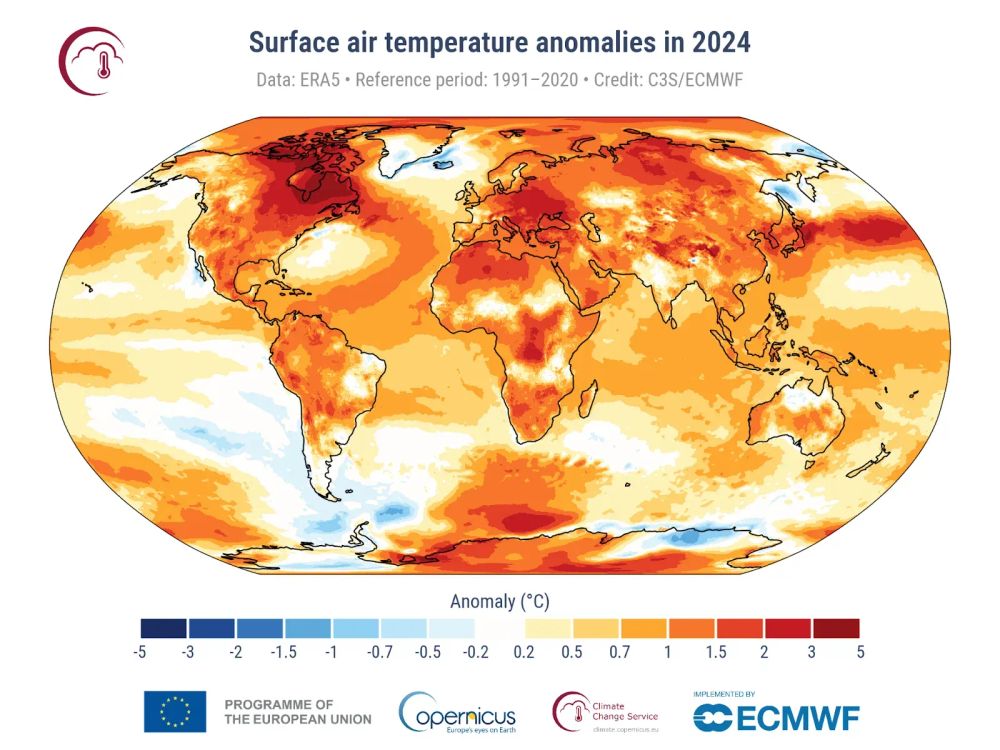
🌎 Narrow habitat preferences
❄️ Cold-adapted ranges (especially in the fast-warming Arctic)
🌲 Fragmented forests
🔄 Low adaptive capacity
TLDR: 10 of 11 species are at medium or high risk.

TLDR: 10 of 11 species are at medium or high risk.
New peer-reviewed research in @stacksjournal.bsky.social assesses the future of the Guloninae across the globe — and the outlook is rough. 🦊🌍🧪
A 🧵

New peer-reviewed research in @stacksjournal.bsky.social assesses the future of the Guloninae across the globe — and the outlook is rough. 🦊🌍🧪
A 🧵
💰 Cost-effective: Only one temperature logger needed
🦊 Efficient: Detects when animals are inside, not just nearby
📈 Scalable: Automatable—ideal for long-term monitoring
4/
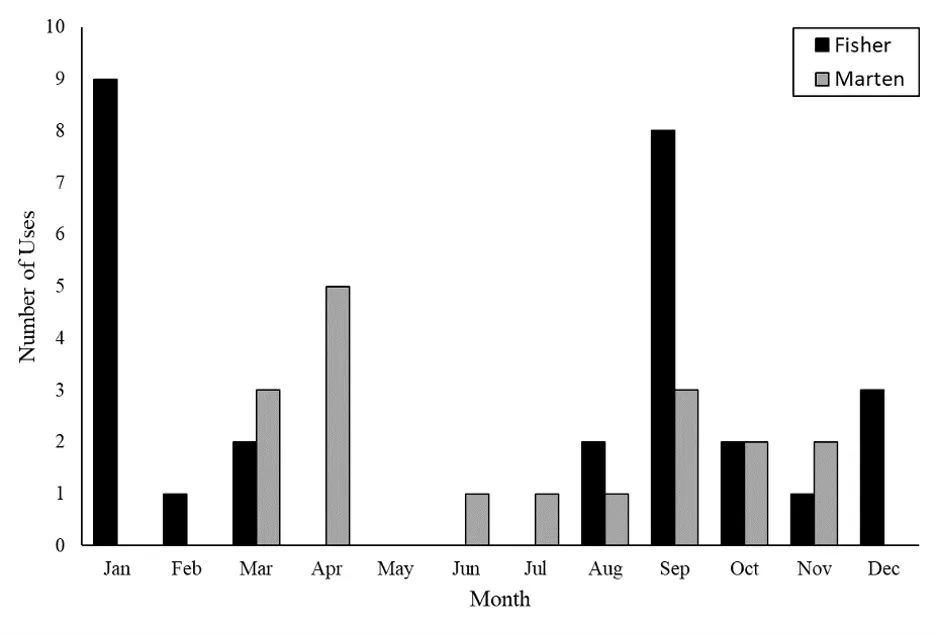
💰 Cost-effective: Only one temperature logger needed
🦊 Efficient: Detects when animals are inside, not just nearby
📈 Scalable: Automatable—ideal for long-term monitoring
4/
And they found...
Every fisher and marten visit triggered a consistent temperature spike. Even better—those spikes were distinct enough to tell the species apart!
3/

And they found...
Every fisher and marten visit triggered a consistent temperature spike. Even better—those spikes were distinct enough to tell the species apart!
3/
New research in @StacksJournal.bsky.social shows a novel idea: using the rate of temperature change in den boxes to track martens, fishers, and even sometimes squirrels. 🌍🧪🦊
A 🧵
#WildlifeConservation
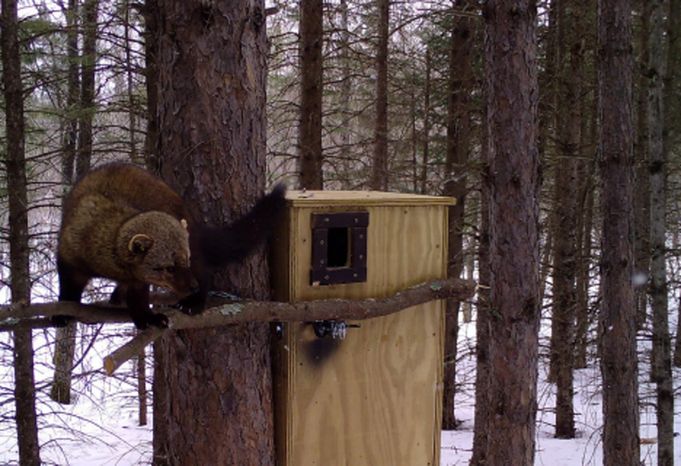
New research in @StacksJournal.bsky.social shows a novel idea: using the rate of temperature change in den boxes to track martens, fishers, and even sometimes squirrels. 🌍🧪🦊
A 🧵
#WildlifeConservation
The surprise? In 6 out of 11 sable populations, some animals were actually pine marten hybrids.
And – morphology alone couldn’t tell them apart.
3/
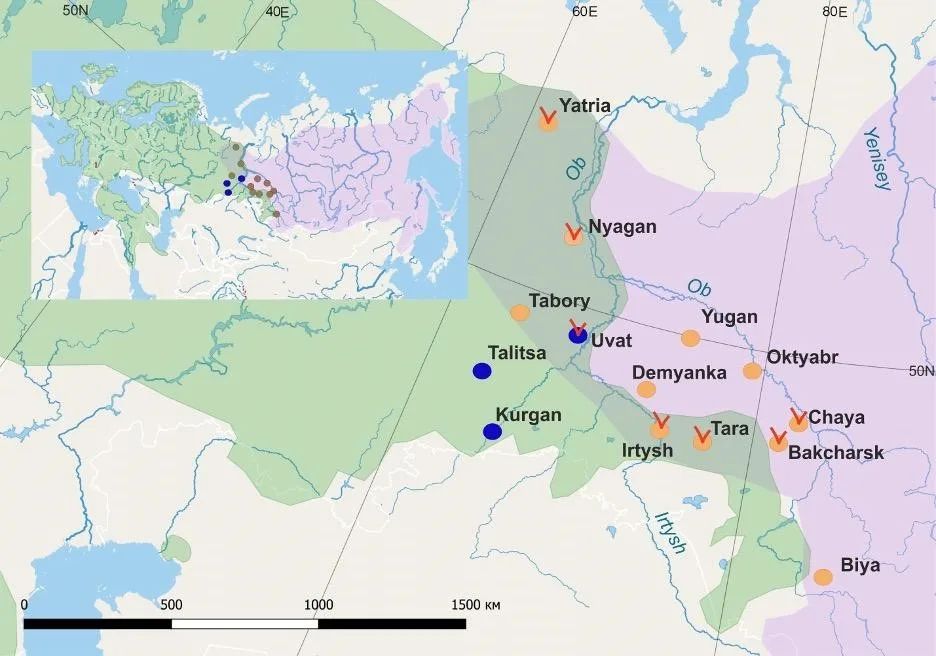
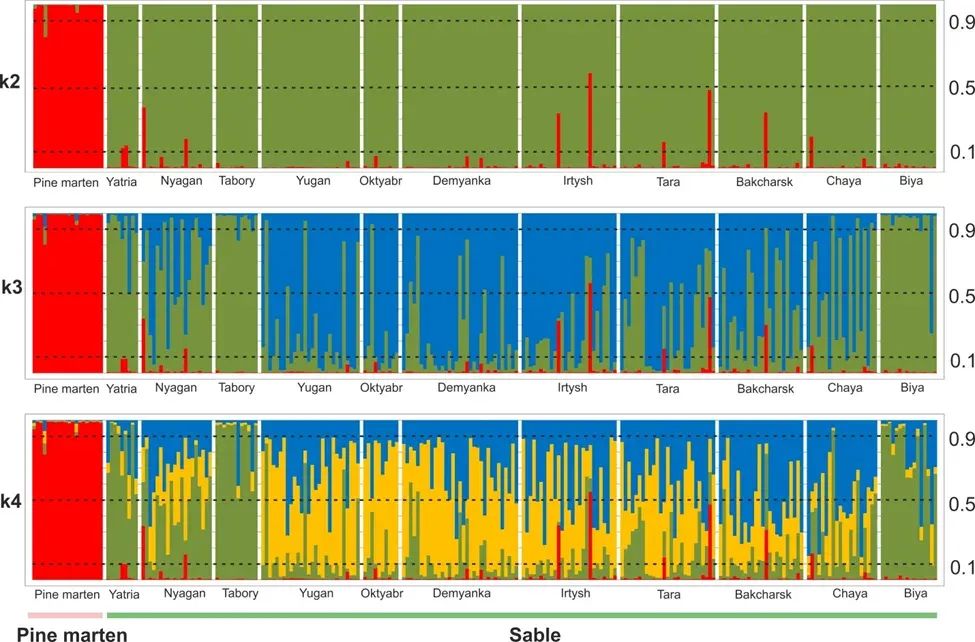
The surprise? In 6 out of 11 sable populations, some animals were actually pine marten hybrids.
And – morphology alone couldn’t tell them apart.
3/
But in areas where their ranges overlap, hybrids (called "kidus") may resemble either one.
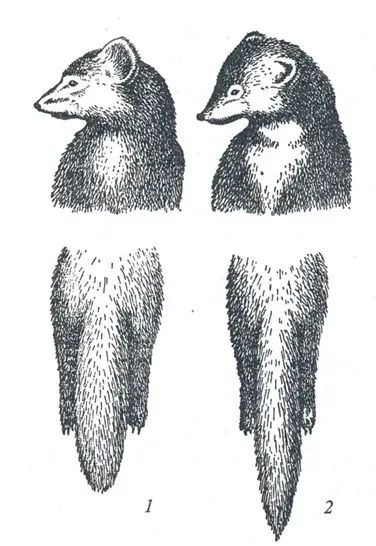
But in areas where their ranges overlap, hybrids (called "kidus") may resemble either one.
In the Ural forests, it may be harder than you think.
New research reveals how genetic tools can uncover surprising levels of hybridization in the wild.
🧬🦊🌍🧪
A🧵
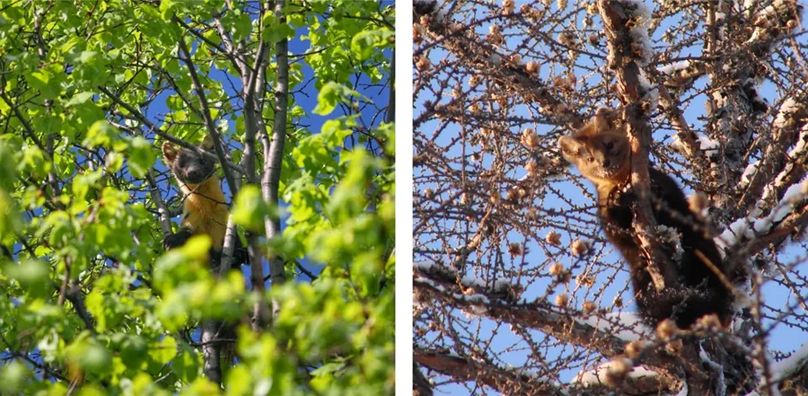
In the Ural forests, it may be harder than you think.
New research reveals how genetic tools can uncover surprising levels of hybridization in the wild.
🧬🦊🌍🧪
A🧵
🟩 Local colonization drives most occupancy
🍂 But in fall — when juvenile skunks disperse — long-distance movements increased
Open lawns and water sources played a key role.
4/
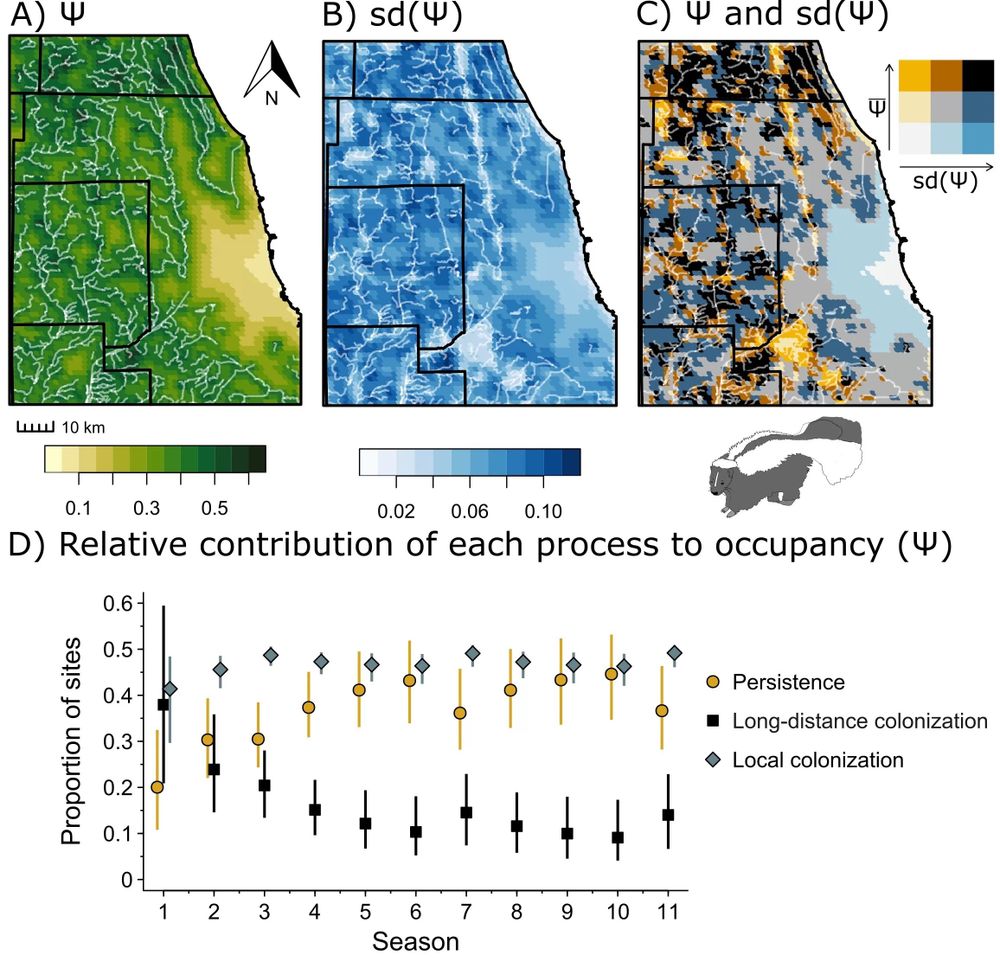
🟩 Local colonization drives most occupancy
🍂 But in fall — when juvenile skunks disperse — long-distance movements increased
Open lawns and water sources played a key role.
4/
Their goal? To figure out if skunks spread locally from nearby dens — show up from long distances.
2/
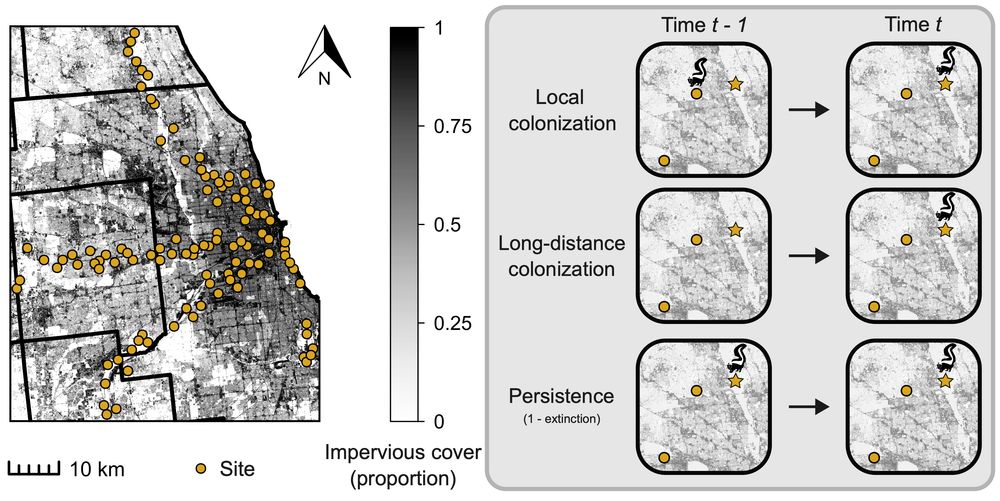
Their goal? To figure out if skunks spread locally from nearby dens — show up from long distances.
2/
New research from @masonfidino.bsky.social, @lizalehrer.bsky.social, & @sbmagle.bsky.social from @lpzoo.org used nearly a decade of data to find out! 🦊🌍🧪
A 🧵

New research from @masonfidino.bsky.social, @lizalehrer.bsky.social, & @sbmagle.bsky.social from @lpzoo.org used nearly a decade of data to find out! 🦊🌍🧪
A 🧵
4/

4/
🟤 Columbian fishers consume more hares, squirrels, and grouse
🟤 Boreal fishers relied more on small mammals and ungulates
These patterns reflect ecological divergence across biogeoclimatic zones.
3/
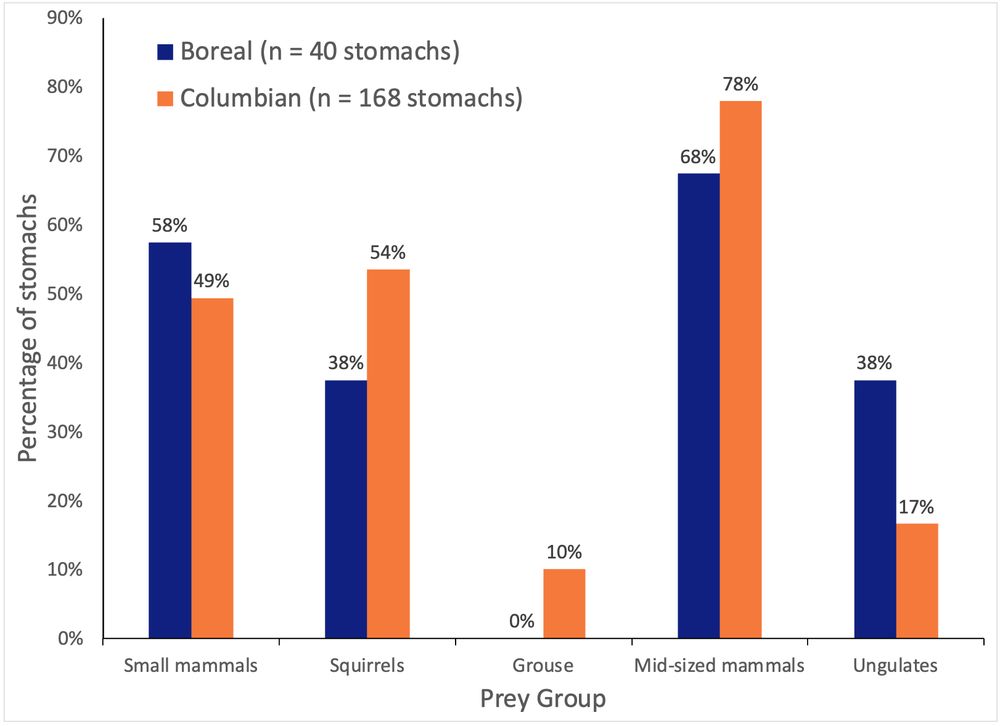
🟤 Columbian fishers consume more hares, squirrels, and grouse
🟤 Boreal fishers relied more on small mammals and ungulates
These patterns reflect ecological divergence across biogeoclimatic zones.
3/
2/

2/
We only publish articles with >70% approval, and we disclose the identities of the reviewers and publish the peer review with every article.
Transparency creates more trust.
4/n

We only publish articles with >70% approval, and we disclose the identities of the reviewers and publish the peer review with every article.
Transparency creates more trust.
4/n
We're a scientific journal founded on the ethics of good science.
We believe that publishing should be collaborative, fair, and transparent.
Here's how we're creating a new future for scientific publishing.
#SciPub #AcademicSky 🧪
1/n
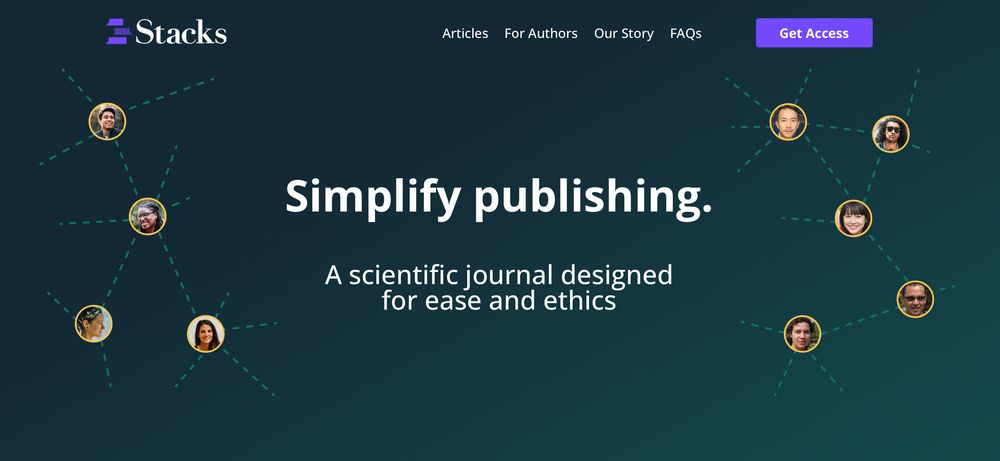
We're a scientific journal founded on the ethics of good science.
We believe that publishing should be collaborative, fair, and transparent.
Here's how we're creating a new future for scientific publishing.
#SciPub #AcademicSky 🧪
1/n
They recommend that southwest England and south Cumbria should be evaluated for new pine marten reintroductions.
4/

They recommend that southwest England and south Cumbria should be evaluated for new pine marten reintroductions.
4/
3/

3/
But how do we determine where to reintroduce them?
New research on pine #Martens from the Martes Working Group provides a clear framework for answering this important question.
A 🧵
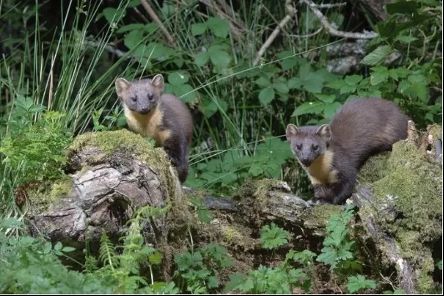
But how do we determine where to reintroduce them?
New research on pine #Martens from the Martes Working Group provides a clear framework for answering this important question.
A 🧵
It's #OpenAccess and went through our new collaborative peer review.
6/6
https://doi.org/10.60102/stacks-24003

It's #OpenAccess and went through our new collaborative peer review.
6/6
https://doi.org/10.60102/stacks-24003
They also developed a really interesting statistical model using #Bayesian analysis to answer their questions.
3/

They also developed a really interesting statistical model using #Bayesian analysis to answer their questions.
3/
Compared to illegal grows, legal ones often have high-powered grow lights, drying fans, and visual barrier fencing.
2/

Compared to illegal grows, legal ones often have high-powered grow lights, drying fans, and visual barrier fencing.
2/
There’s been rapid growth of #cannabis farms in the US, but little is known about how #wildlife are impacted.
So Phoebe Parker-Shames and her colleagues Ben Goldstein & Justin Brashares studied this question.
Here’s what they found 🧵



